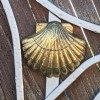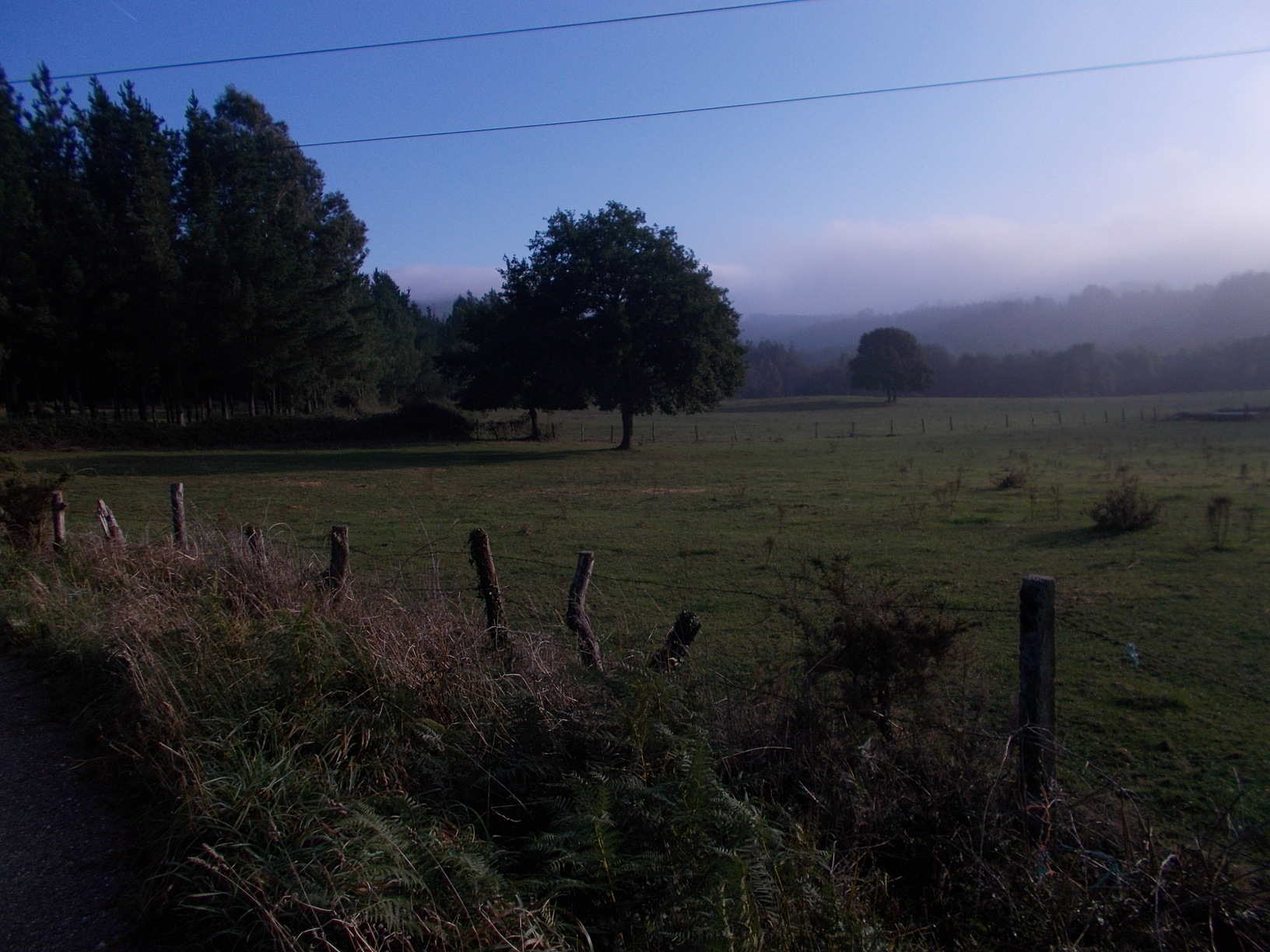Walking sticks. Some people would hardy leave their house for a walk without them, whereas others hate to carry them. But should you take one, or two sticks on the camino with you? What are the real pros and cons, and what should you take into account when deciding about this piece of equipment? Last but not least, should you opt for walking stick, hiking poles, or even Nordic walking poles when embarking on your pilgrimage? We will try to answer all these questions on the following lines, and at the end I will also show you the best product for each type of budget. Let’s dive into this!
Table of Contents
Key points to consider when deciding whether or not to take hiking/walking sticks on the Camino
First of all, you should realize that Camino de Santiago is a long walk. If you decide to follow Camino Frances, Camino del Norte, or Via de la Plata from start to finish, you will spend 4+ weeks walking. And that’s completely different than doing one long walk or hike, resting for a week, and then going for another one.
What I try to convey here is that tiredness will accumulate, both in your muscles and joints. It may feel easy on the knees to carry that 10 kilo backpack and cover the ups and downs on the first day of your pilgrimage, and you may experience no pain. However, without you realizing it, small muscle tears occur, and ligaments around your joins slowly start to inflame. Little by little, things may get serious, you may start experiencing pain with every step, and once it happens there’s no coming back. If you answer YES to any of the following questions, you should definitely take walking poles or sticks with you:
- Are you overweight?
- Have you experienced knee pain on any of your previous walks or hikes?
- Will this be your first trip with a (relatively) heavy backpack?
- Do you feel really out of shape at the moment?

– Gorke on Camino del Norte, walking without sticks
Each way in Spain is different, and so is the need for walking sticks
If this is going to be your first long pilgrimage, you probably do not know that there are more than 15 different ways of Saint James in Spain alone. I’ve walked most of them, and though each one is special, they are definitely very different, in many ways… In this post, however, I want to focus on the differences that come into play when you are deciding whether to take hiking sticks with you or not.
* May also interest you: Ultralight Camino packing list – carry less, enjoy more.
The crucial point to remember: Unless you really know how to walk with the sticks properly (which in my experience less than 10% of people carrying them know), they are completely useless on flat terrain. You may actually cause yourself more harm than good when walking with the stick(s) on a flat terrain and having bad technique. In the best case scenario they won’t be of any help…
When you hit the hills however, the ups and down, that’s when walking sticks really come into play, and will help you even if you do not have the right technique. Because you will naturally use them to transform part of the weight from your knees and legs to your arms and back, and hence you will make things easier for your knees–which is the part of body that betrays the pilgrim more often than any other one. Think about your way. Is the Camino you plan to walk hilly? How much elevation will you cover on an average day? Will the hills be steep? Speaking about the most popular Caminos, I’d say that:
- You should definitely take hiking poles while walking Camino del Norte, especially when starting from Irun or from San Sebastian. The hills aren’t big, but they are super steep and hard on the knees.
- Camino Frances has longer hills, but they aren’t as steep as the hills on the Norte. However, you may find the hiking poles especially helpful during the first week of your pilgrimage, when crossing the Pyrenees.
- Via de la Plata is a beautiful and special way, but it is really flat in general. Definitely there’s not a need to to take sticks or poles with you, unless you have the problems I specified earlier.
- Camino Portuguese–both the central way and the coastal one is relatively flat all the way from Porto to Santiago. It isn’t that long either, and you can probably do without poles (again unless you answered “YES” to one of the questions I mentioned at the beginning of the article).
- Camino Primitivo has become very popular lately. This is a hilly way, including both long and steep hills, and I’d suggest you to take poles with you, even though it isn’t the longest of Caminos…
- If you are planning to walk any other way, and unsure about the terrain and whether you should take walking sticks with you, you can always contact us and we’ll be glad to help you make the right call :).

– Camino San Salvador belongs to most beautiful pilgrimage ways in Spain, but is pretty hilly. When I walked it every second pilgrim on the way experienced some knee problems… Definitely a way on which you need hiking poles, unless you are really experienced.
What sticks are the best? And cannot I buy them directly in Spain?
Now you may think:
I will go without sticks, no need for a hassle. If I start experiencing any pain in the knees, I will get them in Spain.
Well, it isn’t as easy as it sounds, believe me :). First of all, once you start experiencing serious pain in the knees, it may be already too late. You may be forced to interrupt or even end your pilgrimage (I’ve seen that happen several times). Even if you can continue after few days of rest, your time constraints may not allow you to walk the entire way. You’ll have to take buses or end before reaching Santiago, and I am sure that’s the last thing you want to happen on this trip.
Secondly, big parts of every Camino pass through rural countryside. Of course, you can get a knee pain when approaching Leon or Gijon, and buy some sticks on the very same day. But you may also get problems in the middle of Pyrenees or while passing through rural Galicia. Do not count on buying some hiking sticks there.
* May also interest you: Best t-shirt for Camino de Santiago – my personal experience
Camino provides, but not all sticks are equal
No doubt that if you experience some pain, you will get a stick. Because Camino provides. Maybe someone forgot (or left) their stick in the albergue, or another pilgrim (seeing you in pain) will donate you their stick. You can always also pick a piece of wood and use it to ease the load on your knees at least a little.
However, you should realize that each stick is different, and you should buy the right sticks for you–for your height, your purpose, your preferences. Stick that is too long or too short may again cause you more harm than good. And of course a random wooden stick can hardly replace a professional hiking or walking stick, with all the right technology, materials, handles, etc.
To sum it up, if you buy your walking sticks upfront and bring them to Spain with you, you know what you have, and what you can rely on. You can also test the poles back at home and train with them a bit. On the other hand, if you take your chances with providence and Spanish shops, you will get the stick, but perhaps it won’t be the one you’ll enjoy walking with and carry…
Other pros and cons of having a walking stick (or a pair of hiking poles) on Camino de Santiago
I hope that my thoughts so far helped you decide whether or not YOU should take walking sticks with you, while embarking on YOUR Camino de Santiago. If you are still unsure, however, here are some additional pros and cons of walking sticks to consider.
Additional pros of taking walking sticks on the Camino:
- They can help as a protection against stray dogs or other animals. Stray dogs aren’t as common as they were fifteen years ago in Spain, but you may still meet some stray or unchained dogs. And while I wouldn’t necessarily recommend trying to tame an aggressive dog with a stick :), it feels better having one when some dogs approaches you barking, looking ready to bite.
- You can always help another pilgrim with your stick. Maybe you eventually won’t need the sticks. But you can bet that at least some pilgrims around you will have problems with their knees. Following the spirit of the pilgrimage, you can offer them your stick, and immediately strengthen your connection :).
Cons of walking sticks on the Camino:
- Their weight. Sure enough you can buy lightest carbon poles from Black Diamond or Leki, but even if you opt for such an expensive variant, the poles still weigh something. And it isn’t a part of equipment you will “consume” during the way, so you’ll have to carry them all the way to Santiago (even if you do not use them).
- Most airlines won’t accept them onboard. If you travel on a budget, and want to save on luggage, taking only hand-luggage with you–and many pilgrims do so, you may have problems taking the walking sticks on board. Sure enough, the last thing you want to happen is having to leave them on the airport, or paying last-minute checked-in luggage just so you can take your sticks with you.
- They may cause more harm than good on flatter terrain, if you do not use them properly. As I’ve already said, on hills almost everyone uses the walking sticks correctly, because it comes natural. But most people have really bad technique on flat terrain, which can cause all sorts of muscular imbalances, over-straining of certain muscles and joints, and even injuries, if you use them really badly day in day out, while getting closer to Santiago de Compostela.

– Sheep you will meet while walking in the Pyrenees (Camino Frances) aren’t dangerous, and you won’t need your walking stick for protection. But they aren’t the only animals you may meet on your pilgrimage 🙂
Best sticks to take with you – my recommendations
If, after reading everything on this page, you decided to get some walking sticks for your pilgrimage, let me help you with your choice. If you’re not on a tight budget, I strongly suggest you to opt for carbon trekking poles, from renowned brands like Leki or Black Diamond. Their products are top-class, tested by athletes, lightweight, and they offer all sorts of warranties. But I also understand that not everyone can afford such a luxury, and hence I hand-picked for you three different walking sticks, for each type of budget. I have experience with all these brands, and can personally guarantee that you will be satisfied. So here we go:






Now you may wonder, why would anyone buy walking sticks that cost $200? Well, I have such sticks, and walked thousand of kilometers with them, on trails much harder than the camino, and I can assure they will last you many years with virtually no maintenance required. They weigh almost nothing, pack easily, and are simply one of those things that can serve you for a lifetime. Speaking about brands of expensive poles, the only real difference between Black Diamond and Leki is a grip type, and that Leki typically doesn’t have adjustable length (at least not on their most expensive models). If you buy from Leki, make sure to buy the right length (it is explained on their page, you can also check the following website for the calculator of right height of a trekking pole: https://montemlife.com/trekking-poles-hiking-sticks/trekking-poles-height-calculator/)
Regardless of your budget and the brand you will eventually go with, you should opt for trekking poles, or trail running poles, or hiking sticks–different stores and brands use different names… However, Nordic walking poles aren’t a good option for Camino de Santiago, since Nordic walking is a specific sport. You’re going to Spain for a pilgrimage, not to perform Nordic walking…
Last but not least, I really do not recommend buying one of those wooden sticks they sell in shops in Saint Jean Pied de Port or in other towns that happen to be popular starting points for the Camino. These sticks are unnecessary heavy, too long, do not have any handle, and in most cases walking with them can cause you more harm than good.
Conclusion
To be, or not to be? To take walking stick(s) on the Camino, or not to take? As you can hopefully see now, the questions doesn’t have one right answer only. I personally walked pilgrimages both with poles and without them, always taking into consideration my physical condition, the way I wanted to walk, and other factors I described in this post. Hopefully you can make the right decision for you now. In any case, I wish you buen camino! And if you have more questions, you can always contact me :).
Matej
May also interest you: Can you lose weight walking the Camino?




![Ultralight Packing List for Camino de Santiago [2025 Edition]](https://caminolovers.com/wp-content/uploads/2022/03/altra-shoes-640-x-480.jpg)


